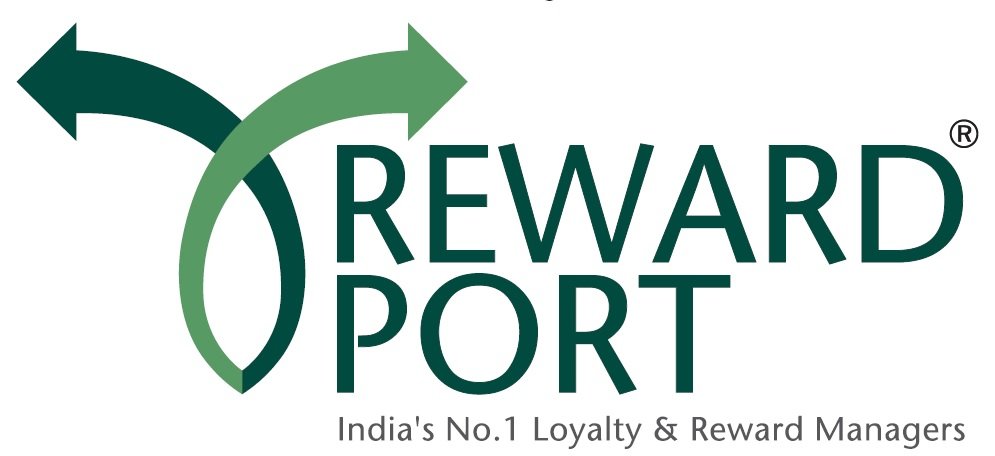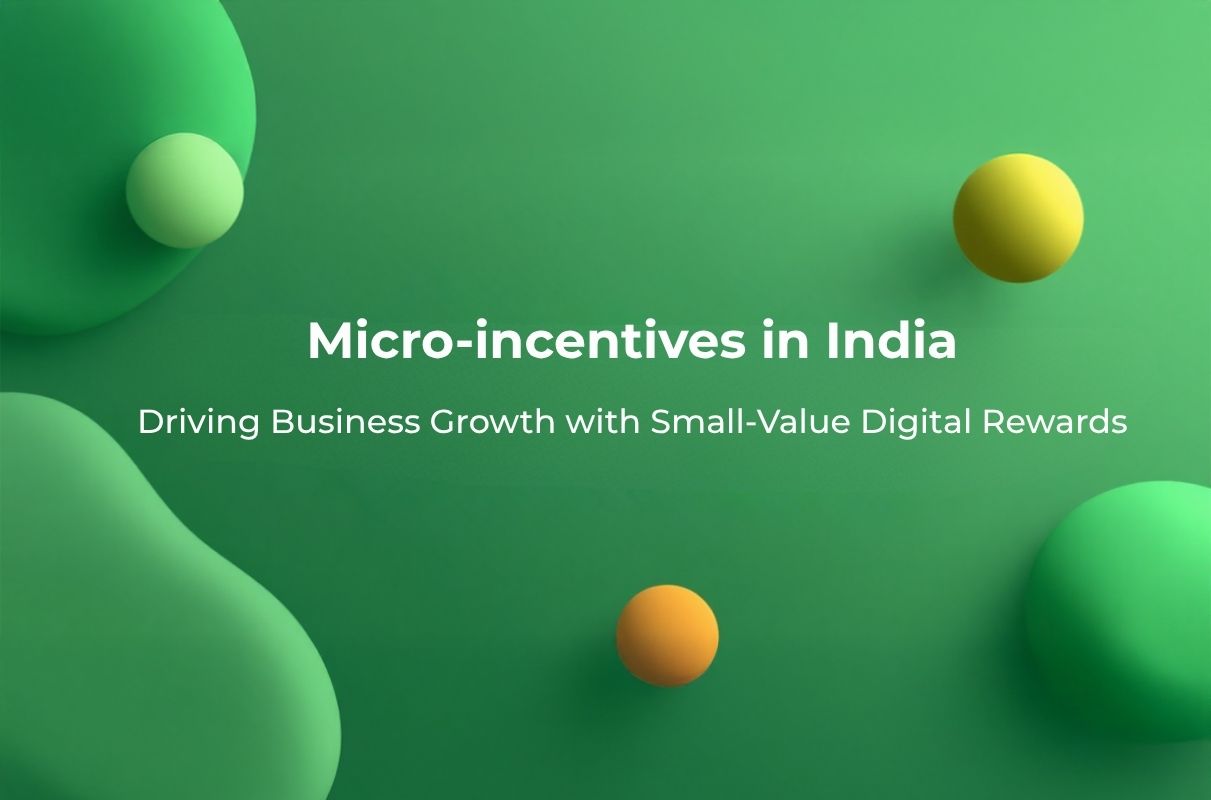
Micro-incentives in India: Driving Business Growth with Small-Value Digital Rewards
Explore how micro-incentives using small-value digital rewards empower Indian marketers to boost consumer engagement and channel loyalty efficiently.
Micro-incentives in India: Driving Business Growth with Small-Value Digital Rewards
In today’s competitive Indian market, brands, channel leaders, and HR professionals are constantly seeking innovative ways to engage their customers, partners, and employees. Micro-incentives—small-value digital rewards—have emerged as a powerful tool to motivate target audiences effectively and at scale. These instant, easily redeemable rewards enhance engagement, loyalty, and productivity while aligning perfectly with India’s rapidly digitalizing ecosystem.
Understanding Micro-incentives and Their Growing Relevance in India
Micro-incentives refer to low-denomination rewards such as cashback, instant vouchers, points, or experiential perks that organizations offer frequently to encourage specific behaviors and transactions. Unlike traditional high-value incentives, these small, quick-win rewards create steady motivation and continuous participation. In India, the surge of smartphone penetration and digital payment adoption has made micro-incentives an ideal engagement strategy for a vast spectrum of audiences from urban consumers to rural trade partners.
Key Trends Driving Micro-incentive Adoption
Research indicates a sharp rise in digital micro-incentive programs by brands especially in FMCG, consumer electronics, and automotive sectors. These programs leverage instant digital redemption, which satisfies the growing customer expectation for immediacy. For trade partners like dealers, distributors, and retailers, micro-incentives are increasingly linked not just to sales volumes but also to actions like timely reporting, stock display, and digital engagement. Moreover, wellness- and experience-based micro-rewards have become popular among younger urban consumers.
RewardPort’s Strategic Role in Micro-incentive Campaigns
As India’s specialist in consumer promotions, loyalty, and channel incentives, RewardPort offers comprehensive plug-and-play modules that simplify deployment of micro-incentive programs. Whether it is our Cashback Engine delivering instant or tiered cashback, the RewardOne gift voucher platform with real-time tracking, or the Gamification Engine featuring over 100 branded games, our solutions are designed to meld fun, ease, and strategic results.
RewardPort’s extensive rewards catalog plays a vital role in ensuring that micro-incentives resonate with the target audience. From travel experiences like AirPac and VacPac, to OTT subscriptions, food vouchers, wellness apps, and multi-brand gift vouchers, brands can customize rewards to meet diverse preferences and drive better engagement.
Real-World Impact: RewardPort Case Studies
Several brands leveraging RewardPort’s platforms have recorded significant uplifts by incorporating micro-incentives. For example, Bikaji’s festive QR scan-to-win campaign integrated multiple small-value rewards such as OTT subscriptions and pizza vouchers, resulting in a meaningful festive sales uplift. Similarly, the Aaradhana Foods campaign combined small-value cashback via QR inside packs with draws for premium appliances, successfully driving repeat purchases.
In the channel incentives space, RewardPort’s Dealer & Channel Partner Incentive Programs help businesses engage partners with micro-incentives that reward behaviors beyond sales volume, boosting overall trade engagement and loyalty. Our plug-and-play modules enable seamless integration with CRM/ERP systems to maximize efficiency and effectiveness.
Benefits of Micro-incentives for Indian Marketers and Channel Leaders
Micro-incentives offer several strategic advantages:
- Higher Engagement Frequency: Small rewards encourage frequent interaction and continuous motivation.
- Cost Efficiency: Smaller-value rewards spread across many participants reduce cost per engagement while delivering impactful results.
- Instant Gratification: Digital delivery coupled with instant redemption satisfies modern consumer and partner demand for speed.
- Personalization: Micro-incentives can be customized to different audience segments using RewardPort’s AI-driven targeting and flexible reward catalog options.
- Multi-channel Reach: RewardPort’s platforms support omnichannel deployment—digital apps, WhatsApp, QR codes, and offline games—to engage diverse Indian audiences.
Future Outlook: Micro-incentives Shaping 2026 and Beyond
The momentum for micro-incentives in India is set to grow in line with digital ecosystem expansion, government policy support for MSMEs, and evolving buyer behavior post-pandemic. Brands placing a premium on real-time, personalized, and experiential rewards powered by platforms like RewardPort will gain a competitive edge. The shift from traditional loyalty structures towards frequent, low-value rewards tailored for Indian consumers and trade partners will become the new normal.
Micro-incentives leveraging small-value digital rewards are revolutionizing how Indian marketers and channel leaders engage their audiences. With the right strategy and technology partner like RewardPort, businesses can drive higher loyalty, frequent engagement, and cost-effective campaign outcomes. Embracing micro-incentives is essential for success in India’s fast-evolving digital and retail landscape in 2026 and beyond.
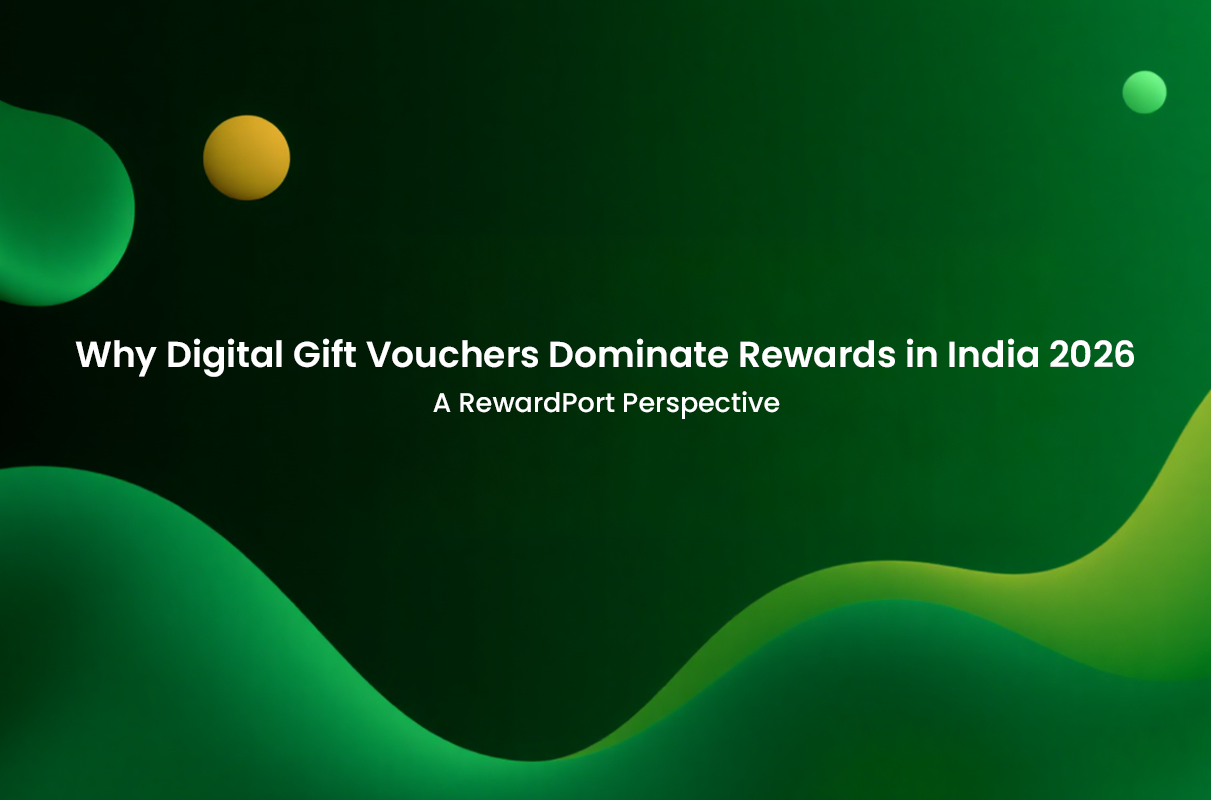
Why Digital Gift Vouchers Dominate Rewards in India 2026: A RewardPort Perspective
Explore why digital gift vouchers are the leading rewards in India’s consumer promotions and channel incentives in 2026, powered by convenience and scalability.
Why Digital Gift Vouchers Dominate Rewards in India 2026: A RewardPort Perspective
Digital gift vouchers have revolutionized the rewards ecosystem in India, becoming the preferred choice across consumer promotions, loyalty programs, channel incentives, and employee rewards by 2026. This transformation is driven by India’s rapid digital adoption, investor confidence in seamless digital payment platforms, and the operational advantages these rewards bring to brands and organizations nationwide.
India’s Digital Voucher Surge: Context and Market Dynamics
The Indian digital gift card market, valued at over USD 15 billion in 2024, is on a steep growth trajectory with an expected CAGR of approximately 16% over the next decade. This surge reflects broader trends powered by the Digital India initiative, UPI’s explosive growth in transactions, and increasing consumer affinity for cashless, instant gratification experiences. Digital gift vouchers now constitute more than 90% of the rewards market’s value in India, clearly overtaking traditional physical gifts due to their convenience, ease of distribution, and personalization capabilities.
Key Trends Fueling Digital Gift Voucher Dominance
Market leaders and RewardPort clients alike tap into these dominant trends: – Instant Delivery and Redemption: Digital gift vouchers enable immediate rewards, critical in boosting engagement during time-sensitive campaigns like festivals or product launches. – Personalization and Localization: AI-driven targeting and vernacular language support enable highly relevant offers, especially in Tier 2 and 3 cities, broadening reach and enhancing effectiveness. – Integration with Payment Ecosystems: Leading fintech platforms embed rewards directly within payment apps, delivering seamless user experiences and simplifying redemption. – Scalability for Channel Incentives: Brands reward extensive dealer and retailer networks efficiently, reducing logistics overhead and improving incentive tracking.
RewardPort’s Strategic Edge in Digital Vouchers
As India’s specialist in consumer promotions and incentive programs, RewardPort harnesses these trends to design tailored, impactful campaigns: – Our RewardOne gift voucher engine offers a customizable catalog of over 950 brands and 50,000+ merchandise SKUs, enabling clients to deliver relevant, desirable rewards aligning with customer preferences and purchase behavior. – The Channely platform integrates CRM/ERP data to seamlessly run channel partner incentive programs, giving dealers flexible, instant rewards via digital vouchers. – In a notable example, RewardPort supported a leading FMCG client with a gift-with-purchase campaign that included instant movie ticket vouchers, driving a measurable uplift in repeat purchases and consumer delight.
Use Cases Across Business Segments
1. Consumer Promotions: Instant digital vouchers boost trial and repeat purchase rates, as seen in festive campaigns offering assured rewards to customers. 2. Loyalty Programs: Points conversion to digital vouchers enhances redemption rates and customer lifetime value. 3. Channel Partner Incentives: Digital vouchers reduce delivery complexity and increase partner engagement with flexible reward choice. 4. Employee Rewards: Catalog-driven digital vouchers serve as compelling incentives in employee recognition and sales motivation programs.
Digital Vouchers as the Future of Rewards in India
Digital gift vouchers offer an unbeatable blend of speed, scale, and personalization, anchored in a maturing digital infrastructure that makes them India’s dominant rewards form by 2026. For marketers and HR/channel leaders focused on maximizing engagement ROI, RewardPort’s end-to-end platforms and extensive reward catalog create a powerful advantage in deploying these reward solutions effectively.
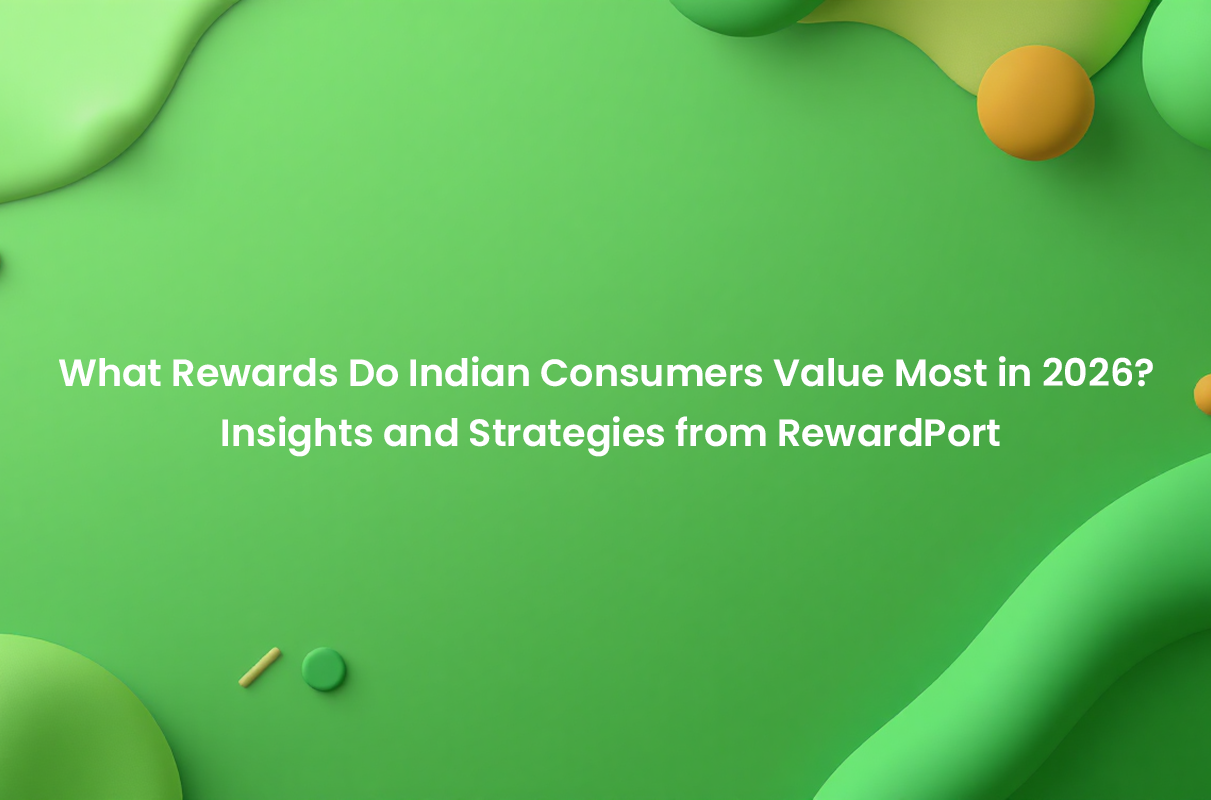
What Rewards Do Indian Consumers Value Most in 2026? Insights and Strategies from RewardPort
Discover the top rewards Indian consumers value in 2026, from cashback to experiential and green rewards, and how RewardPort drives engagement.
What Rewards Do Indian Consumers Value Most in 2026? Insights and Strategies from RewardPort
Indian consumers in 2026 seek rewards that combine personalization, immediacy, and experience. As India’s loyalty program market grows rapidly—expected to surge from USD 4.3 billion in 2025 to over USD 17 billion by 2035—understanding which reward formats resonate most strongly can help marketers, trade leaders, and HR/channel partners optimize engagement and drive business outcomes.
Cashback, Discounts, and Instant Digital Rewards: The Foundation of Consumer Preference
Across urban and rural India, cashback and discount incentives remain the top motivation for joining loyalty programs. Around 68% of urban consumers and 60% of rural consumers prioritize tangible, instant financial benefits, making cashback and assured discounts a critical element in campaigns. This aligns well with RewardPort’s Cashback Engine capabilities, which offer instant or tiered cashback models that appeal to mass-market shoppers and value retail consumers. These rewards are simple, transparent, and offer instant gratification—key to building trust and repeat purchase behavior.
Personalization and Technology Amplify Reward Impact
Indian consumers increasingly expect offers tailored to their preferences and purchase histories. AI-driven personalization boosts program effectiveness by 35-47%, increasing repeat buys. RewardPort’s Freebucks points and Pay system facilitates personalized redemptions, enabling targeted promotions across consumer segments. Furthermore, integration with fintech channels such as BNPL (Buy Now, Pay Later), UPI, and mobile wallets—strong drivers of India’s digital payments adoption—streamlines redemption and reward access, enhancing user convenience and engagement.
Experiential Rewards Are Gaining Traction, Especially Among Urban and Premium Segments
Beyond monetary incentives, experiential rewards such as travel, dining, entertainment, and wellness offerings attract discerning consumers in metros like Mumbai and Bengaluru. RewardPort’s extensive travel catalog (AirPac, VacPac) and entertainment rewards (movie tickets via CineRewardz, OTT subscriptions, and dining vouchers) align perfectly with this trend. Such rewards deepen emotional engagement and brand loyalty, especially when offered as exclusive tiers or milestone incentives.
Sustainability: Green Rewards Create New Loyalty Imperatives
Environmental consciousness is reshaping Indian consumer expectations. Approximately 64% prefer brands offering sustainability-linked rewards, like points for eco-friendly packaging returns or green delivery choices. FMCG brands leveraging such green loyalty initiatives have reported retention boosts up to 20%. RewardPort supports these green rewards with catalog options and customized rules in RewardOne and CRM integrations via Channely to embed sustainability into loyalty programs seamlessly.
Channel and Dealer Incentive Programs: Tiered Milestones and Engagement
In the B2B and channel space, tiered and milestone-based rewards remain critical for motivating dealer and partner networks. RewardPort’s Channely platform integrates with ERP/CRM systems to automate dealer incentives, improve partner engagement, and increase timely payments, backed by proven case studies showing performance uplifts and loyalty growth. These programs combine travel incentives, multi-brand gift vouchers, and instant redemptions tailor-made for channel partners’ preferences.
The Digital Convenience Factor: Seamless Omni-channel Redemptions
Modern Indian consumers expect a frictionless omnichannel experience—earning and redeeming rewards via apps, digital wallets, and in-store interactions. RewardPort’s WhatsApp Redemption Flow, QR scan-to-win, and digital gift voucher engines create seamless user journeys that reduce redemption friction, boost participation, and enhance customer satisfaction.
RewardPort Perspective: Building Integrated, Insight-Driven Reward Campaigns for 2026 and Beyond
As India’s rewards ecosystem grows more complex, RewardPort advises clients to focus on multi-layered campaigns balancing: – Immediate cashback and discount-based incentives for mass appeal – Experiential and wellness rewards for premium and urban segments – Green and sustainable rewards for growing eco-conscious consumers – B2B tiered programs for channel and partner loyalty – Advanced digital integration for seamless customer journeys RewardPort’s plug-and-play modules and extensive catalog enable marketers to tailor promotion lifecycles—from acquisition to referral—leveraging analytics and real-time redemption data to optimize ROI and engagement continuously.
In 2026, Indian consumers’ reward preferences are shaped by a blend of instant value, experiential depth, sustainability, and digital convenience. RewardPort’s comprehensive solutions, vast rewards catalog, and success stories reflect these dynamic trends, empowering marketers and leaders to craft high-impact, consumer-centric loyalty and incentive programs tuned for the future Indian market.
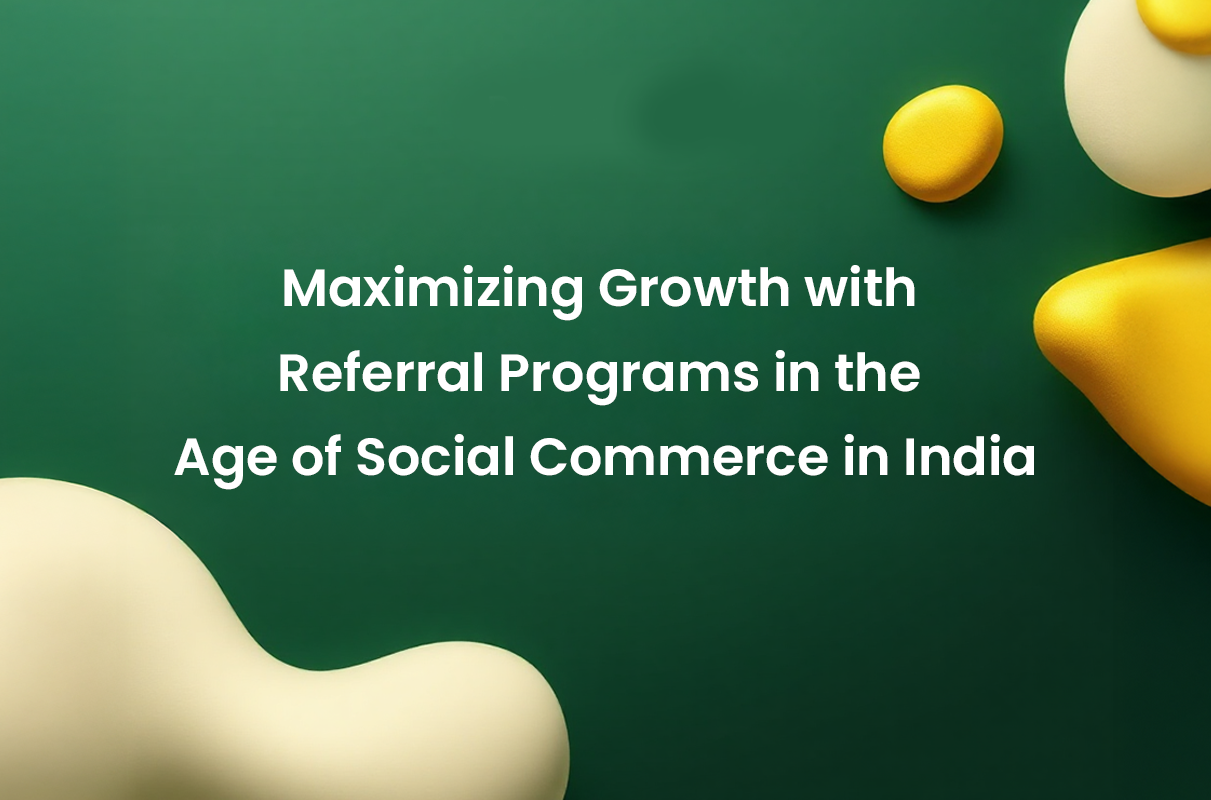
Maximizing Growth with Referral Programs in the Age of Social Commerce in India
Explore how referral programs powered by social commerce are transforming customer engagement and loyalty in India’s booming digital market.
Maximizing Growth with Referral Programs in the Age of Social Commerce in India
India’s social commerce landscape is witnessing unprecedented growth, reshaping how brands engage customers and channel partners. By 2025, the social commerce market in India is expected to reach between $8.4 billion and $20 billion, growing annually at around 17%. This surge is driven by widespread digital adoption and the rise of platforms like WhatsApp and Instagram, where referral programs are becoming crucial growth engines.
Understanding Social Commerce and Referral Programs in India
Social commerce integrates social interactions with online buying, enabling peer-to-peer product discovery and purchase within social media apps. Referral programs within this ecosystem tap into India’s culturally ingrained word-of-mouth behaviors, amplifying sales through trusted personal networks. These programs incentivize consumers and channel partners via rewards such as instant cashback, experiential perks, and wellness incentives, driving deeper engagement compared to traditional marketing.
Emerging Trends Transforming Referral Programs
Digital rewards have become more instant and versatile, with brands leveraging fintech integrations like UPI-based cashback and Buy Now Pay Later (BNPL) options to attract first-time buyers and empower dealers. Influencer and micro-affiliate programs are flourishing, particularly regional language creators who offer high conversion rates by addressing localized audiences. Referral mechanics increasingly focus on compliance—embracing privacy-first data capture and transparent reward disclosures due to evolving regulations, adding a layer of trust that supports sustainable growth.
RewardPort’s Strategic Perspective and Solutions
At RewardPort, we understand the critical role referral programs play in social commerce success. Our plug-and-play modules seamlessly integrate referral programs with rewards catalogs tailored to target audiences. For consumers, our solutions include instant digital cashbacks, food and wellness vouchers, and entertainment subscriptions that resonate with India’s vibrant youth and family segments. For channel partners and dealers, we offer travel club memberships, multi-brand gift vouchers, and gamification engines that build loyalty and drive repeat engagement. Our case studies reflect real-world success: brands employing referral programs linked to social commerce channels have witnessed improved acquisition, repeat purchase rates, and upselling opportunities. Meesho’s viral referral engine and tiered micro-entrepreneur incentives exemplify how leveraging social commerce plus referrals can create powerful brand ecosystems.
Best Practices for Referral Programs in Social Commerce
– Design rewards aligned with the preferences of your target segment, utilizing RewardPort’s extensive catalog. – Implement gamification and tiered incentives to sustain engagement beyond initial referral success. – Comply with India’s evolving regulatory landscape by ensuring influencer transparency and data privacy. – Leverage platform-specific strengths—WhatsApp for direct communications and Instagram for influencer-driven showcases. – Monitor and measure lifetime value of referred customers using integrated CRM and analytics tools.
Referral programs are central to the next phase of growth in India’s social commerce ecosystem. By combining culturally aligned peer influence with innovative reward mechanics and regulatory compliance, brands can amplify acquisition, engagement, and loyalty. RewardPort’s solutions empower businesses to design, execute, and track referral programs that resonate across consumer and channel partner segments, driving measurable business impact in the evolving digital economy.
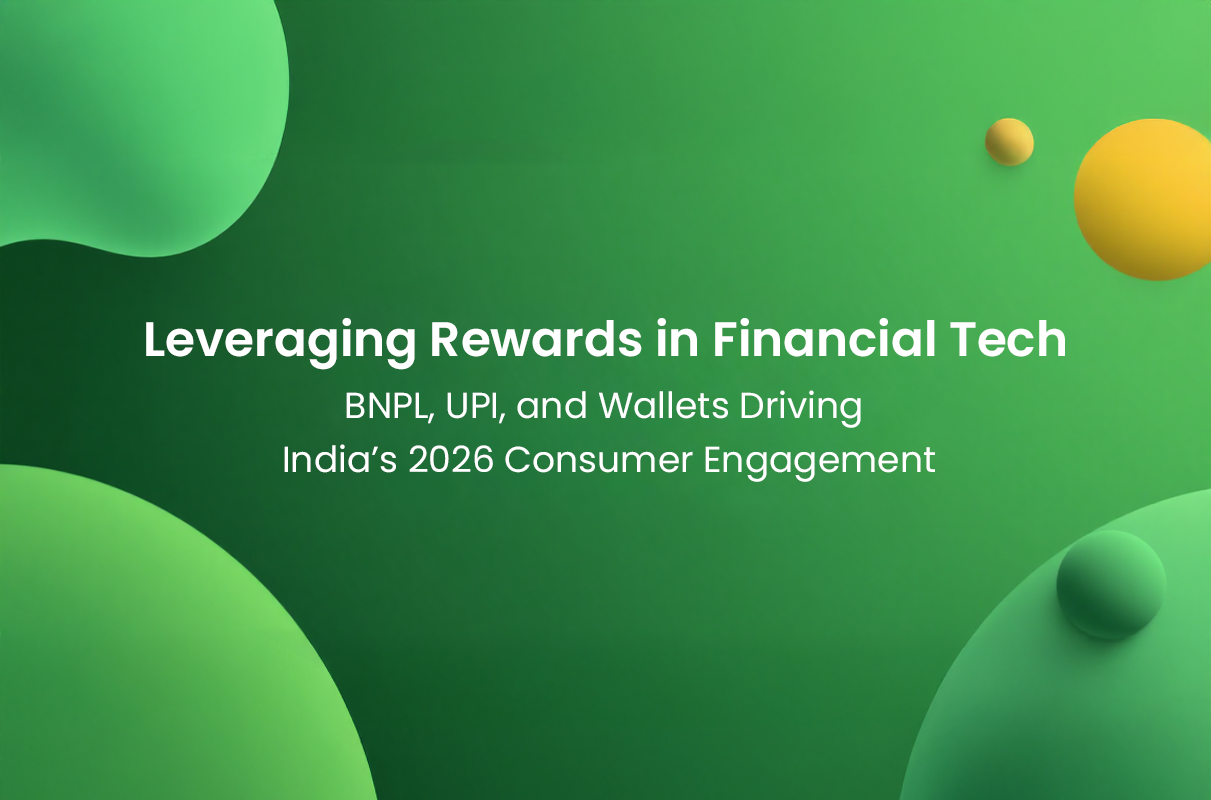
Leveraging Rewards in Financial Tech: BNPL, UPI, and Wallets Driving India’s 2026 Consumer Engagement
Explore how rewards tied to BNPL, UPI, and wallets transform Indian fintech marketing with RewardPort’s solutions and success insights.
Leveraging Rewards in Financial Tech: BNPL, UPI, and Wallets Driving India’s 2026 Consumer Engagement
India’s financial technology sector is booming, with digital payments through UPI, wallets, and BNPL (Buy Now, Pay Later) platforms reshaping consumer behavior and brand engagement. As we look towards 2026, rewards linked to these fintech innovations are becoming pivotal tools for B2B marketers, trade leaders, channel managers, and HR strategists to enhance acquisition, loyalty, and revenue growth. RewardPort, India’s trusted partner in consumer promotions and incentive programs, harnesses this dynamic landscape to deliver impactful, measurable results.
India’s Fintech Landscape: The Rise of BNPL, UPI, and Wallet Rewards
By late 2024, UPI monthly transactions crossed 15 billion in volume, moving nearly USD 280 billion in value, positioning it as a cornerstone payment method for millions nationwide. Wallets and prepaid payment instruments (PPIs), while experiencing slower growth, remain critical for instant payments and merchant incentives. Meanwhile, BNPL is evolving rapidly with tighter regulations ensuring transparent, responsible credit use, and brands increasingly embedding rewards to encourage timely repayments and upsell opportunities. Financial rewards linked to these platforms today go beyond simple cashback to include digital vouchers, instant redemption schemes, and experiential rewards such as wellness and travel—a trend growing fast among India’s increasingly digital and reward-savvy consumers. The growing integration of pay-by-points and gamification mechanics further enhance engagement, especially among younger demographics.
RewardPort’s Strategic Advantage in Fintech-Linked Rewards
At RewardPort, we tailor our promotions to the fintech ecosystem’s pulse. Our plug-and-play modules like Freebucks (points + pay), RewardOne (custom voucher engines), and Channely (channel partner incentives with CRM/ERP integration) are uniquely designed to integrate seamlessly with digital payments channels including UPI, BNPL, and wallets. For example, our collaboration with FMCG and technology clients uses instant disbursal of dealer incentives via UPI combined with tiered loyalty programs and wellness rewards from our extensive catalog to drive channel engagement and repeat sales effectively. Similarly, our cashback engine and gamification solutions power BNPL providers’ campaigns that reward timely repayment and increased product adoption with digital rewards and experiential prizes.
Insights from RewardPort Case Studies
– Dealer & Channel Partner Incentive Programs: Leveraging the Channely platform, clients have implemented real-time UPI wallet incentives with tier upgrades and multipliers, increasing dealer engagement by over 20% quarterly. – Consumer Acquisition via BNPL-linked Rewards: Incorporating our RewardOne vouchers tied to digital wallets encouraged trial purchases and timely payments, leading to a 27% boost in repeat transactions. – Gamified Cashback Campaigns: Using our gamification engine combined with cashback, brands observed higher frequency of purchases during festive seasons driving trial-to-repeat ratio upwards.
Emerging Trends for 2026 and Beyond
The future will see tighter integration of AI and data analytics creating hyper-personalized reward experiences across digital wallets and payments. Wellness and experiential rewards such as fitness memberships, holiday vouchers from VacPac, and dining credits will become mainstream to differentiate offers and deepen emotional brand connections. Regulatory clarity and consumer trust around BNPL will encourage platforms to innovate responsibly with rewards tied to credit health and timely repayments. Further, increasing UPI transaction limits for rural and semi-urban areas will broaden reward program reach, fostering inclusion.
In India’s fast-evolving fintech ecosystem, rewards linked to BNPL, UPI, and wallets are not just value-adds but core strategic levers powering acquisition, loyalty, and channel activation. RewardPort’s deep domain expertise, modular tech solutions, and robust rewards catalog—from instantaneous cashback to travel and wellness experiences—position businesses to scale engagement and ROI in 2026 and beyond.
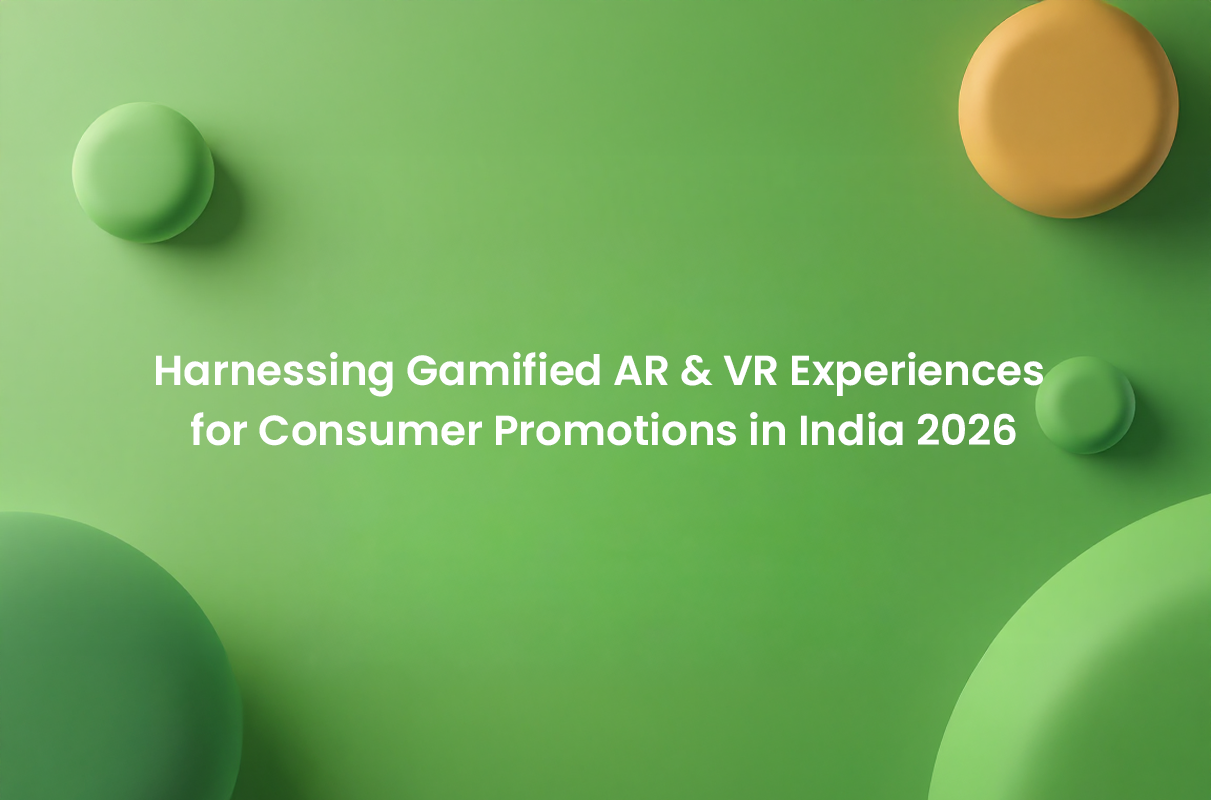
Harnessing Gamified AR & VR Experiences for Consumer Promotions in India 2026
Explore how gamified AR & VR consumer promotions in India boost engagement and loyalty with mobile-first, immersive rewards in 2026.
Harnessing Gamified AR & VR Experiences for Consumer Promotions in India 2026
The Rising AR & VR Wave in India’s Promotion Landscape
India’s augmented reality (AR) and virtual reality (VR) market is rapidly evolving, projected to reach approximately US$917.5 million by 2025 with user penetration nearing 45%. This growth is fueled by increasing smartphone adoption and 5G connectivity, making mobile-first AR experiences more accessible than ever. While headset-based VR remains niche due to cost, app-based AR promotions are gaining wider traction among Indian consumers and businesses alike. This shift sets a fertile ground for gamified AR & VR experiences to revolutionize consumer promotions, loyalty programs, and channel incentives by delivering richer, more interactive brand engagements.
Key Trends Driving Gamified AR & VR Promotions in 2026
Brands leveraging gamified AR/VR see markedly higher user engagement and brand recall. Indian consumers now expect promotions that go beyond passive interactions — gamification creates an active, playful environment that deepens emotional connection and encourages repeat participation. AR advertising revenue in India is estimated to hit US$182 million by 2025, reflecting growing marketer confidence. Gamified AR/VR promotions also enable instant, personalized rewards such as cashback, wellness experiences, or holiday vouchers, blending enjoyment with tangible value. In channel incentive programs, dealers encounter VR-based product demos and gamified contests that stimulate sales while rewarding partner loyalty.
RewardPort’s Perspective: Integrating Gamified AR/VR Into Consumer Promotions
At RewardPort, we recognize the power of immersive gamified AR & VR as an execution method for Indian marketers aiming for impactful brand activations. Our plug-and-play modules facilitate integrating branded gamified experiences seamlessly into multi-channel campaigns, ensuring adherence to cost-effective, mobile-first formats suitable to India’s market dynamics. By combining these engaging formats with our robust rewards catalog — spanning instant cashback, travel vouchers, entertainment passes, and wellness packages — campaigns achieve measurable uplift in trial, repeat purchase, and referral metrics. Our experience with client campaigns confirms that pairing gamified digital play with experiential or instant redemption drives a winning mix of fun and loyalty.
Case Insights from RewardPort Campaigns
While specific gamified AR/VR campaigns are emerging, parallels from RewardPort’s gamification, scratch & win, and WhatsApp redemption programs demonstrate proven lift in engagement and sales. For instance, FMCG clients employing interactive instant-win games with layered reward tiers have seen up to 3-5x participation increases relative to traditional scratch cards. Channel incentive programs deploying gamification to engage dealers with reward milestones yield higher motivation and accountability. Applying these best practices to AR/VR’s immersive play opens new avenues for Indian brands, especially leveraging mobile AR scavenger hunts, customizable VR product showcases, and real-time leaderboard contests.
Looking Ahead: Strategic Considerations for 2026 and Beyond
As AR/VR hardware becomes more affordable and content creation tools more accessible, brands should anticipate hybrid models combining smartphone AR with occasional VR headset activations at flagship events. Personalization powered by AI will further enhance gamified experience relevance and reward appeal. Marketers should also align gamified AR/VR experiences with clear KPIs — from trial and repeat sales to channel push and employee incentives — to maximize ROI. RewardPort’s multi-brand voucher catalogs and flexible reward engines are designed to support these evolving strategic imperatives with agility and scale.
Gamified AR and VR experiences represent a dynamic frontier for consumer promotions and channel incentives in India by 2026. RewardPort is uniquely positioned to help brands harness these innovations with proven gamification frameworks and a comprehensive rewards catalog optimized for the Indian market. By embracing mobile-first interactive play coupled with instant, appealing rewards, Indian marketers can unlock deeper consumer and partner engagement, driving loyalty and business growth in an increasingly digital landscape.
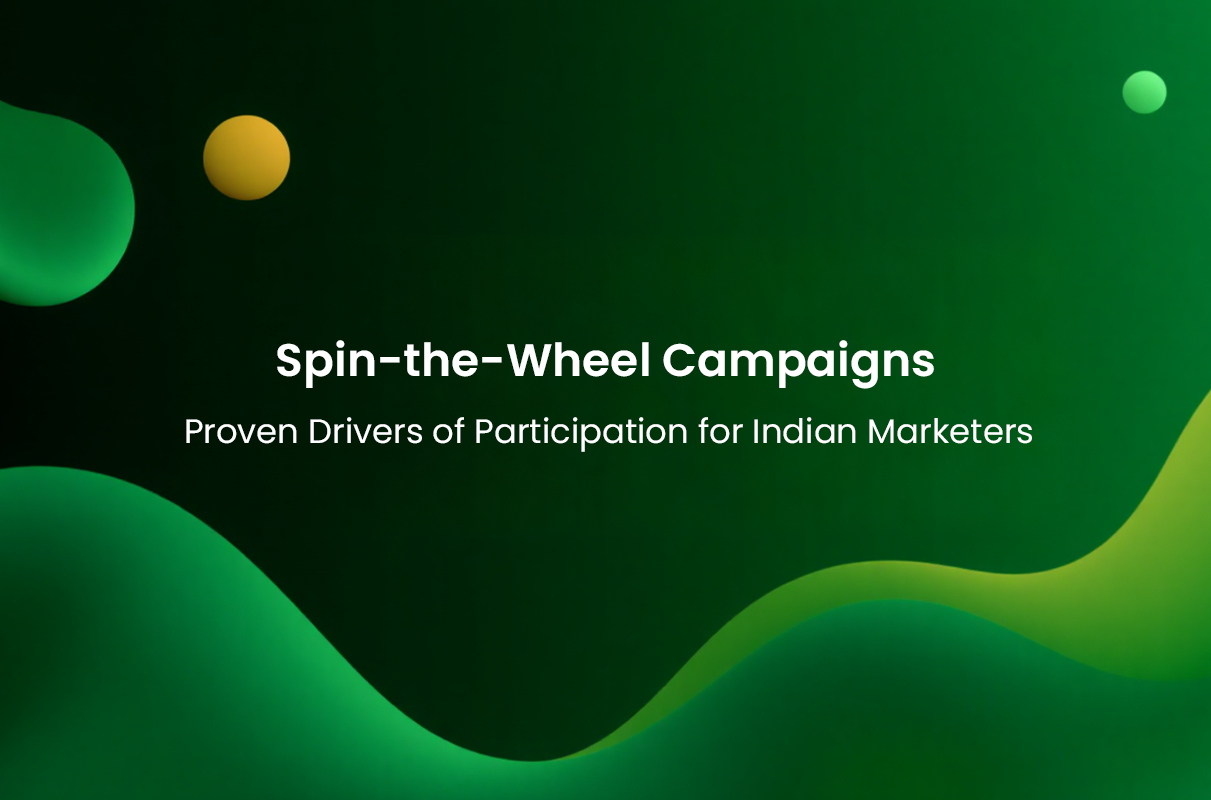
Spin-the-Wheel Campaigns: Proven Drivers of Participation for Indian Marketers
Explore how spin-the-wheel campaigns boost engagement and loyalty in India with instant rewards and personalized experiences.
Spin-the-Wheel Campaigns: Proven Drivers of Participation for Indian Marketers
Spin-the-wheel campaigns have emerged as highly effective tools for consumer promotions, loyalty programs, and channel partner incentives in India. Between 2024 and 2026, they have gained traction due to their dynamic engagement features and ability to deliver instant gratification, making them a favored tactic among B2B marketers, trade leaders, and HR/channel incentive planners.
Why Spin-the-Wheel Campaigns Drive High Engagement
Data from recent Indian market campaigns indicate spin-the-wheel models consistently achieve participation rates of 30–40%, outperforming traditional static rewards like coupons or point systems. This high engagement is primarily due to the game’s element of chance combined with instant rewards, which appeals to consumer psychology and the desire for immediate benefits. The perceived fairness and transparency of spin-the-wheel odds also foster trust, encouraging repeat participation from consumers and channel partners alike. For Indian brands, leveraging digital platforms such as mobile apps, WhatsApp, and QR codes at points of sale facilitates seamless omnichannel engagement, even in tier-2 and tier-3 cities.
Trends in Reward Types and Campaign Execution
Successful spin-the-wheel campaigns integrate diverse rewards that cater to varied audiences. Popular incentives include instant cashback, UPI credits, mobile recharges, shopping vouchers, and wellness gifts such as health checkups and fitness app subscriptions. Wellness and experiential rewards see increased uptake among younger demographics, especially Gen Z and young professionals. On the B2B front, spin-the-wheel mechanics have proven their worth in dealer and channel partner programs. Incentivizing sales targets with gamified rewards can boost order frequency by 20–45%, moving beyond conventional slabs-based incentives. This not only drives higher sales but also enhances partner loyalty. Personalization is an emerging trend where campaign platforms tailor wheel odds and rewards based on participant history and segmentation. This strategic approach ensures sustained engagement and higher campaign ROI.
RewardPort Perspective and Solutions
At RewardPort, we understand the critical balance between fun and strategic objectives in spin-the-wheel campaigns. Our gamification engine supports over 100 branded game formats, including spin-the-wheel, enabling brands to run seamless, engaging campaigns with robust tracking and analytics. Moreover, our Reward Catalog offers a vast selection of rewards across travel, entertainment, food, health & wellness, essentials, and gift vouchers—ensuring the prize mix aligns perfectly with target audiences. For example, integrating movie tickets and pizza vouchers appeals to younger consumers, while travel and dining vouchers resonate with family segments. Our case studies reflect these insights: channel partner programs using spin-the-wheel mechanics have shown measurable uplifts in engagement and sales. By integrating instant digital rewards with personalized redemption experiences, RewardPort clients see stronger loyalty and repeat participation.
Regulatory Considerations and Best Practices
Brands must ensure compliance with Indian regulations by structuring spin-the-wheel campaigns without participation fees and linking spins to legitimate purchase or engagement activities. Transparent communication regarding odds and rewards is essential to maintain consumer trust and avoid perceptions of gambling. Brands are encouraged to leverage data-driven insights from campaign analytics to refine audience segmentation and optimize reward allocation, driving consistent program improvement.
Spin-the-wheel campaigns offer a proven, dynamic method to increase participation and loyalty in diverse Indian market segments. When executed with a balanced rewards strategy and supported by digital engagement platforms like RewardPort, these campaigns deliver measurable uplift in customer and channel partner engagement, translating directly into business growth.
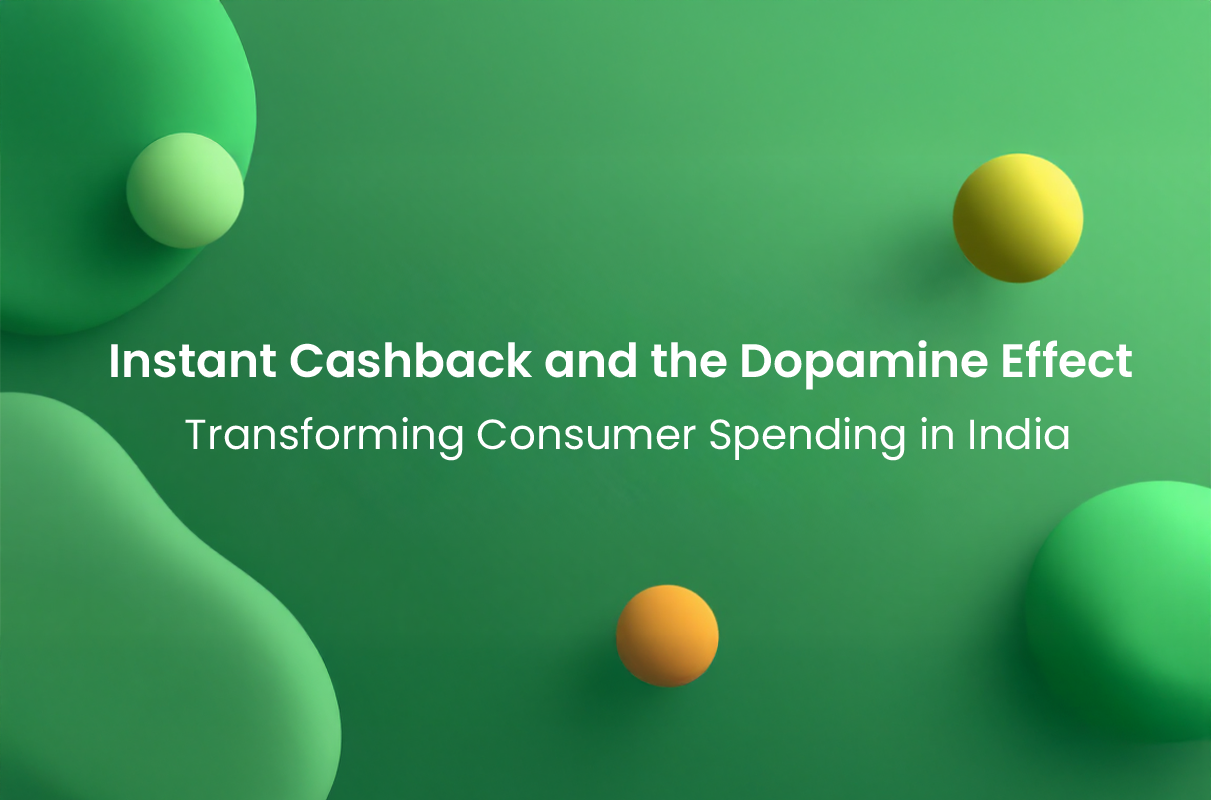
Instant Cashback and the Dopamine Effect: Transforming Consumer Spending in India
Explore how instant cashback leverages dopamine-driven rewards to boost consumer spending, loyalty, and engagement in India’s dynamic market.
Instant Cashback and the Dopamine Effect: Transforming Consumer Spending in India
Instant cashback has emerged as a powerful tool in India’s consumer promotions and loyalty programs, deeply influencing spending behavior through the neurochemical dopamine effect. As RewardPort, India’s specialist in consumer promotions, channel incentives, and employee rewards, we recognize that the immediacy of cashback taps into consumers’ desire for instant gratification, enhancing both engagement and loyalty. This article explores the underlying psychology, market trends, and RewardPort’s strategic approach to harnessing instant cashback for impactful business outcomes.
The Dopamine Effect: Why Instant Cashback Works
Instant cashback generates a strong dopamine response — a neurotransmitter associated with pleasure and reward — providing an immediate sense of financial gain and satisfaction. This effect encourages consumers to make more frequent purchases, often increasing transaction sizes and brand loyalty. The psychological gratification of instant rewards creates a positive feedback loop, motivating consumers to engage repeatedly with brands offering these incentives.
Market Context: Rapid Growth of Instant Cashback in India
The Indian cashback market is on a robust growth trajectory. Valued at approximately USD 7.6 billion in 2024, it is forecasted to nearly double to USD 14.3 billion by 2029, growing at a compound annual growth rate (CAGR) of 13.4%. This growth reflects expanding digital payment adoption, rising disposable incomes, and increasing consumer preference for value-driven shopping experiences. The number of online shoppers is expected to exceed 270 million by 2024, growing at over 22% annually, further fueling cashback program participation.
Key Sectors and Use Cases
Instant cashback is widely deployed across various sectors: – Consumer Promotions: Platforms like Paytm and Flipkart leverage instant cashback during festivals and sales, driving spikes in transaction volumes and brand engagement. – Loyalty Programs: Credit cards from leading banks offer up to 5% instant cashback, incentivizing repeat card usage and enhancing customer lifetime value. – Channel and Partner Incentives: Businesses use instant cashback to energize channel partners and dealers, improving sales and inventory movement. – Experiential and Wellness Rewards: Integrated cashback rewards now extend to experiences like travel, dining, and health services, appealing to the aspirational Indian consumer.
RewardPort’s Perspective: Crafting Effective Instant Cashback Campaigns
At RewardPort, we design instant cashback campaigns that balance dopamine-driven engagement with strategic marketing goals — from acquisition to loyalty and referral. Our plug-and-play cashback engine allows brands to customize reward structures, ensuring seamless redemption and real-time gratification. By integrating data-driven personalization, we help our clients optimize cashback offers that resonate uniquely with diverse customer segments. Our case studies reveal impactful outcomes: a leading food brand used QR inside-pack cashback with assured rewards plus a high-value appliance draw, significantly boosting repeat purchases. Another consumer electronics campaign combined assured cashback with premium gifts, accelerating stock movement during festive seasons.
Trends Shaping Cashback Programs 2025 and Beyond
– Personalization: Behavioral segmentation enhances relevance and increases redemption rates. – Omnichannel Integration: Bridging offline and online presence ensures wider and more frequent consumer touchpoints. – Experiential Rewards: Consumers increasingly prefer cashback linked to travel, dining, and wellness, which strengthen emotional brand connections. – Dealer & Channel Engagement: Tailored instant cashback schemes for partners improve incentivization and business outcomes.
Instant cashback in India is more than just a financial incentive — it’s a psychological trigger that unleashes the dopamine-driven reward response, boosting consumer spending, loyalty, and partner engagement. By harnessing this effect, RewardPort empowers brands and businesses to create compelling, outcome-driven campaigns that align with evolving market dynamics and consumer expectations.

Instant Rewards: Unlocking the Power of ‘Now’ in Consumer Psychology for Indian Marketers
Explore why instant rewards drive consumer engagement in India. Learn how RewardPort’s solutions leverage ‘now’ to boost loyalty, sales, and channel incentives.
Instant Rewards: Unlocking the Power of ‘Now’ in Consumer Psychology for Indian Marketers
In today’s fast-paced Indian market, the value of instant rewards—immediate incentives delivered at the point of engagement—has risen dramatically. Consumers increasingly expect gratification within moments, not days or weeks. This shift is reshaping consumer psychology and driving new dynamics in loyalty programs, promotions, and channel partner incentives. For B2B marketers, trade leaders, and HR/channel heads, understanding why “now” matters can unlock powerful engagement and competitive advantage.
The Psychology Behind Instant Rewards
Psychologically, instant rewards leverage the primal human desire for instant gratification, creating immediate emotional impact. In India especially, where digital adoption and mobile commerce are booming, consumers exhibit heightened impulsivity and preference for quick results. Studies show that the “10-minute delivery” model in quick commerce (Q-commerce) is a tangible reflection of this mindset, prioritizing speed over price sensitivity.
This instant gratification triggers dopamine release, reinforcing positive buying behavior and increasing repeat purchase likelihood. Social media amplification, scarcity messaging, and influencer endorsements intensify this effect by creating FOMO (fear of missing out) and emotional urgency that prompt faster decisions.
Trends Shaping Instant Reward Campaigns in India
Loyalty programs are evolving from conventional points-based schemes to highly personalized, AI-driven, instant reward models. Leading Indian platforms like Swiggy, Flipkart, and Paytm have revamped their reward structures to emphasize cashback, digital vouchers, and experiential perks that consumers can redeem immediately.
Cashback campaigns deliver concrete, instant value, rapidly outpacing delayed reward schemes. Integration with mobile wallets and UPI ensures frictionless redemption, driving strong consumer satisfaction and retention. On the channel partner front, instant digital rewards and wellness incentives motivate dealer participation effectively, enabling businesses to meet sales targets faster.
RewardPort’s Perspective: Delivering Instant Value at Scale
At RewardPort, our solutions are designed to harness the power of instant rewards tailored to Indian consumers and business ecosystems. Our plug-and-play modules, such as Freebucks—combining point accumulation with instant redemption—perfectly align with the now-first consumer mindset.
Our AI-powered personalization tools optimize reward delivery timing and relevance, contributing in some campaigns to a repeat purchase uplift nearing 27%. Whether through cashback engines, gamification with branded digital games, or WhatsApp-based instant win flows, RewardPort enables brands to create moments of delight and immediate value.
RewardPort’s extensive reward catalog—featuring movie tickets, food vouchers, travel experiences, wellness services, and multi-brand gift vouchers—caters to diverse Indian demographic segments. This breadth empowers marketers to match instant rewards with customer preferences closely, deepening engagement and loyalty.
Case Study Insights
Leading brands enabled by RewardPort have successfully driven up sales and engagement by embedding instant rewards into their campaigns. For example, a consumer goods campaign combining assured cashback with high-value draws saw significant repeat purchase and penetration growth. Channel partner incentive programs leveraging instant digital rewards achieved rapid dealer activation and sustained trade engagement.
Future Outlook: Instant Rewards and Beyond in 2026+
Looking ahead, instant rewards will become even more sophisticated through AI-enhanced hyper-personalization and integration with emerging tech like AR/VR experiential incentives. The consumer’s expectation for seamless, immediate value will continue to accelerate, particularly among India’s digitally native youth and urban families.
Marketers and trade leaders who invest in instant gratification-driven programs will not only capture attention and loyalty but also unlock higher lifetime value and channel advocacy in India’s competitive markets.
Instant rewards are not just a trend but a fundamental shift in consumer psychology that Indian marketers must embrace. At RewardPort, we provide the tools, insights, and rewards catalog to make “now” a powerful ally in building engagement, sales, and loyalty. By prioritizing instant gratification within your promotions and channel incentives, you can meet evolving consumer and partner expectations head-on and build lasting business advantage through 2026 and beyond.
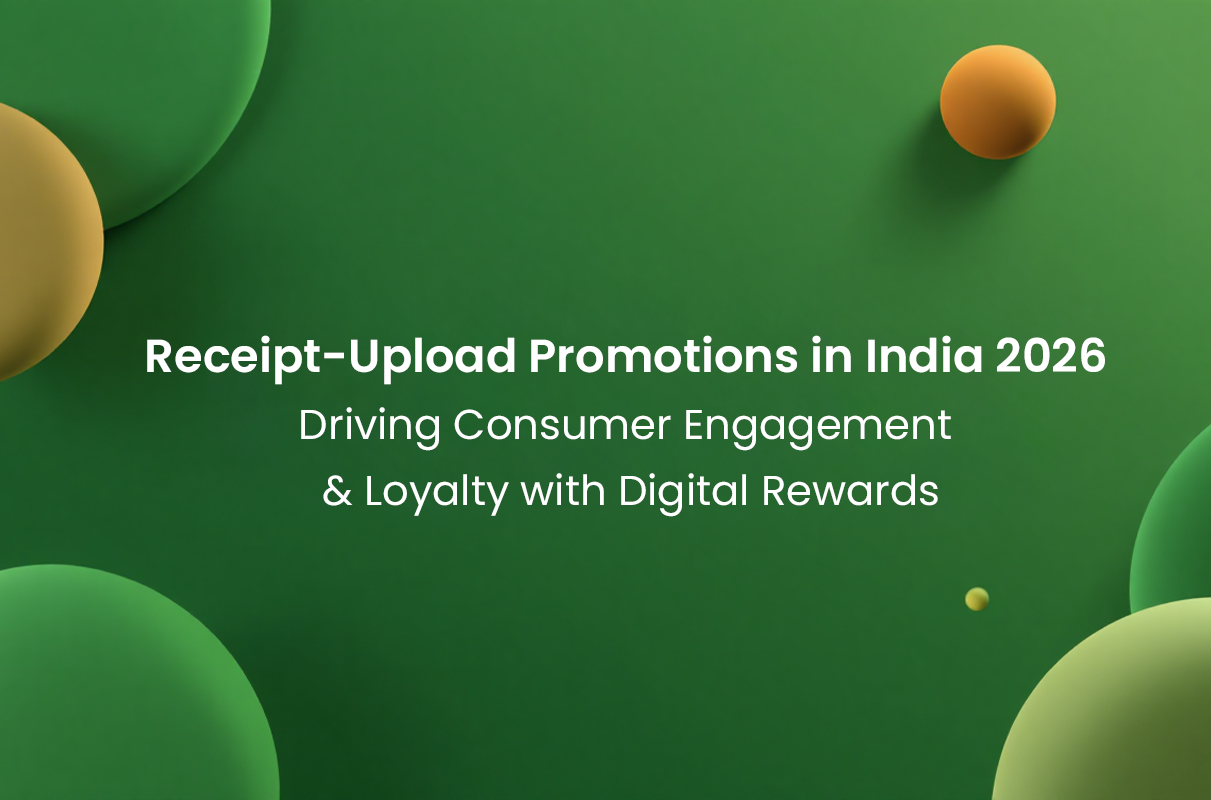
Receipt-Upload Promotions in India 2026: Driving Consumer Engagement and Loyalty with Digital Rewards
Explore receipt-upload promotions in India 2026, their growing consumer adoption, and how RewardPort enables seamless, rewarding campaigns with digital-first solutions.
Receipt-Upload Promotions in India 2026: Driving Consumer Engagement and Loyalty with Digital Rewards
Receipt-upload promotions—where consumers upload proof of purchase receipts digitally to unlock rewards—are rapidly gaining traction across India’s consumer market in 2025 and beyond. This proven activation leverages India’s soaring digital payments ecosystem and widespread smartphone adoption to engage shoppers, deepen loyalty, and incentivize repeat purchases. From FMCG brands to retail chains, these promotions are evolving into multi-channel, omnipresent campaigns that connect physical shopper behavior to digital rewards instantly.
Context and Industry Trends Shaping Consumer Adoption
The last few years have seen explosive growth in digital payment platforms like UPI, Paytm, Amazon Pay, and others, which now serve as critical enablers for receipt-upload campaigns. India’s urban and increasingly rural consumers are comfortable scanning receipts via apps or uploading photos through WhatsApp-led flows, expecting seamless and immediate rewards. According to recent market data, promotions combining cashback, discount codes, and experiential rewards dominate sales advertising, often accounting for over 50% of activations in print and digital promotion spaces by late 2023. This mix resonates well with consumers seeking both instant gratification and aspirational prizes. Moreover, brands are embedding receipt-upload mechanics into loyalty programs to convert one-time buyers into repeat customers. Channel partners and dealers are also incentivized via digital credits or spiffs to promote these campaigns at the point of sale, creating a robust ecosystem that ties consumer behavior with partner engagement. This omnichannel integration ensures broader adoption and sustained momentum into 2026.
RewardPort’s Perspective and Execution Expertise
At RewardPort, we recognize receipt-upload promotions as a cornerstone of India’s future-facing customer engagement strategies. Our plug-and-play modules enable brands to deploy campaigns that drive acquisition, repeat purchase, and up-sell by combining instant cashback, digital vouchers, and experiential rewards such as spa visits or movie tickets—drawing from our comprehensive rewards catalog. Our solutions emphasize ease of participation through mobile apps and WhatsApp, supported by robust invoice validation backend systems that ensure fraud mitigation and data accuracy. By integrating dealer and channel incentives alongside consumer rewards, RewardPort fosters a seamless ecosystem that magnifies impact across the value chain. Case studies within the industry reveal compelling uplifts: FMCG brands partnering with payments players have recorded over 20% increases in repeat purchases during receipt-upload campaigns that reward digital cashback instantly. Retailers leveraging experiential tiers from RewardPort’s entertainment catalog have seen elevated engagement and footfall, particularly in premium urban segments.
Key Consumer Adoption Drivers for 2026 and Beyond
– Digital Payments Penetration: With UPI transactions exceeding 100 billion annually, digital receipt uploads are frictionless and widely accessible. – Omnichannel Loyalty Integration: Combining online and offline purchase data through receipts strengthens personalized marketing. – Reward Diversity: Consumers gravitate towards instant cashback, multi-brand voucher catalogs, and experiences, all easily redeemable. – Channel Partner Engagement: Incentivizing dealers and retailers accelerates adoption at grassroots levels. – Mobile-First and Vernacular Accessibility: Simplified app and WhatsApp-based uploads drive inclusion across urban and rural areas alike.
Embracing Receipt-Upload Promotions with RewardPort
Receipt-upload promotions represent a dynamic confluence of digital innovation, consumer psychology, and multi-tier incentives within India’s rapidly evolving retail landscape. RewardPort’s expertise in orchestrating such campaigns—leveraging digital-first execution models and a wide-ranging reward catalog—positions brands to thrive in this vibrant space. As adoption accelerates through 2026, marketers embracing these campaigns with precision and agility will unlock significant growth in customer acquisition, loyalty, and channel engagement.
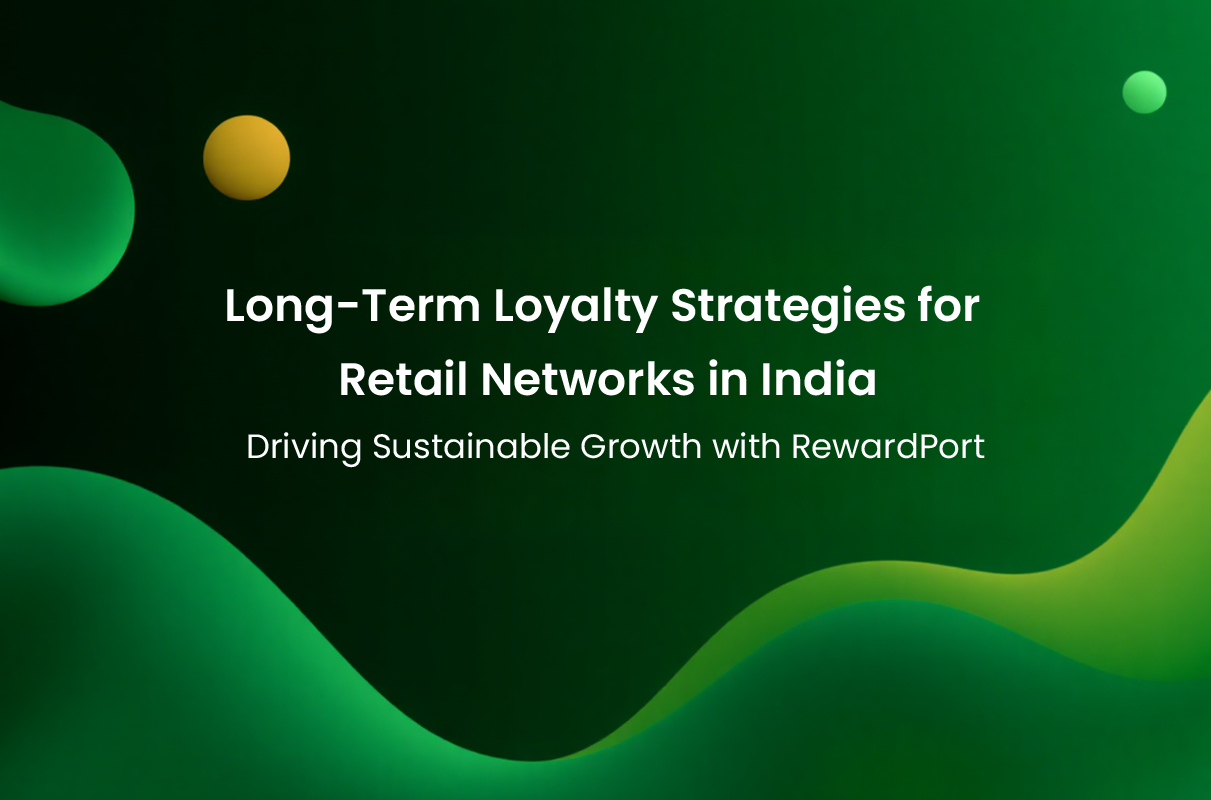
Long-Term Loyalty Strategies for Retail Networks in India: Driving Sustainable Growth with RewardPort
In the fast-evolving Indian retail landscape, fostering long-term customer and channel loyalty has become indispensable for sustainable growth. By 2026, the loyalty market in India is expected to exceed US$3.9 billion, fueled by rising smartphone penetration, digital payment adoption, and shifting consumer expectations. Retailers must implement sophisticated, data-driven loyalty strategies that blend personalization, omnichannel engagement, gamification, and meaningful rewards. RewardPort, as India’s specialist in consumer promotions, loyalty programs, and channel incentives, enables businesses to harness these trends through proven solutions and curated reward catalogs.
Long-term loyalty strategies today center on personalized, mobile-first, and digital-first approaches. Customers crave relevance — programs powered by AI analytics leverage purchase data and behavior patterns to deliver customized offers and rewards. This approach significantly enhances repeat purchase rates and lifetime customer value. RewardPort’s platform facilitates integration with CRM/ERP systems, empowering retailers to automate personalized promotions seamlessly across online and offline channels.
Gamification is another proven driver of engagement. Incorporating digital games such as spin-the-wheel, scratch & win, or branded trivia injects excitement and drives deeper interaction with loyalty schemes. RewardPort’s gamification engine offers over 100 branded games tailored to brand tone and audience that deliver a 50%+ uplift in participation. Coupled with instant gratification rewards like cashback or multi-brand vouchers, these elements cultivate habitual engagement.
Omnichannel loyalty programs are crucial to bridge the offline-online divide, enabling effortless earning and redemption of points or rewards regardless of sales channel. Retailers using such models often see 40% higher program participation. RewardPort’s Channely module supports dealer and channel partner incentive programs with CRM connectivity, optimizing engagement across the distribution network.
The rewards catalog plays a strategic role in driving loyalty. Modern Indian consumers and B2B partners increasingly prefer flexibility and choice—ranging from experiential rewards like travel (VacPac, AirPac), movie tickets (CineRewardz), and dining vouchers to essentials, wellness, and digital subscriptions. RewardPort’s extensive catalog with 150,000+ experience options and thousands of partner outlets allows brands to curate reward mixes that resonate deeply with their target segments.
Sustainability-linked promotions are gaining traction, reflecting growing consumer consciousness in India. Campaigns that incentivize eco-friendly actions such as packaging returns or supporting green products boost brand sentiment and retention. RewardPort has facilitated successful green loyalty initiatives delivering measurable impact on customer engagement.
On the channel side, multi-tiered incentive programs for dealers and partners drive loyalty and sales push effectively. RewardPort’s Channely solution integrates with client ERPs to create milestone-based, tiered rewards that improve payment cycles and strengthen distributor relationships, as seen in multiple client engagements.
In summary, the future of retail loyalty in India demands integrating technology and behavioral insights to create engaging, personalized, omnichannel loyalty ecosystems. RewardPort’s holistic solutions—from AI-based program design and gamification to a rich rewards catalog and channel partner incentives—equip brands to build lasting loyalty. Embracing these strategies will drive sustained growth and competitive advantage in India’s dynamic retail environment through 2026 and beyond.

Instant Rewards Revolution: 5 FMCG Giants Share Their Winning Tiered Dealer Program Strategies for 2025-26
The FMCG industry is experiencing a seismic shift in how brands engage with their supply chain partners. Gone are the days when quarterly bonuses and annual recognition ceremonies could sustain dealer motivation. Today’s supply chain partners demand immediate gratification, personalized experiences, and transparent reward systems that recognize their contributions in real-time.
Recent industry research reveals that 87% of FMCG companies are planning to overhaul their dealer incentive programs by 2026, with instant rewards and tiered recognition systems taking center stage. This transformation isn’t just about keeping up with trends—it’s about survival in an increasingly competitive marketplace where supply chain efficiency can make or break brand success.
The Death of Traditional Dealer Programs
Traditional FMCG dealer programs are failing at an alarming rate. Industry data shows that 68% of supply chain partners report feeling disconnected from their brand partners, primarily due to delayed reward recognition and one-size-fits-all incentive structures. The conventional approach of annual targets and quarterly payouts simply doesn’t align with the modern business pace.
“We were losing our best distributors to competitors who offered more responsive reward systems,” shares a senior supply chain director from a leading FMCG brand. “The three-month delay between achievement and recognition was killing our momentum.”
This disconnect has led to decreased loyalty, higher partner churn rates, and ultimately, weakened distribution networks. Forward-thinking FMCG companies have recognized this crisis and are pioneering innovative solutions that blend instant gratification with strategic long-term engagement.
The Instant Rewards Revolution
Instant rewards represent more than just faster payments—they embody a fundamental shift toward real-time recognition and continuous engagement. Modern FMCG supply chain partners operate in fast
